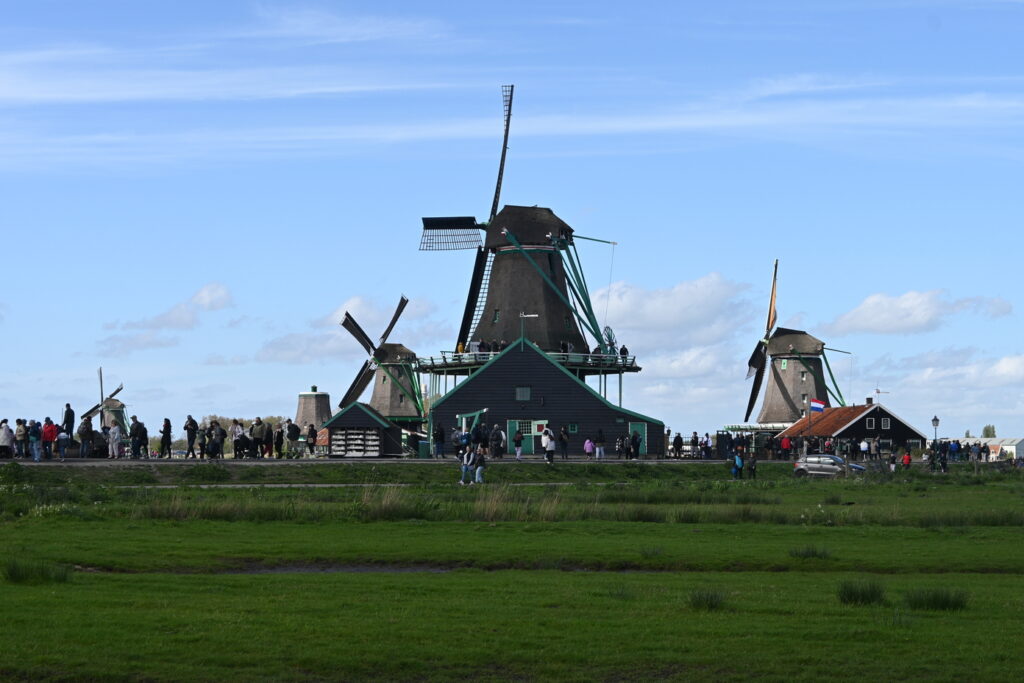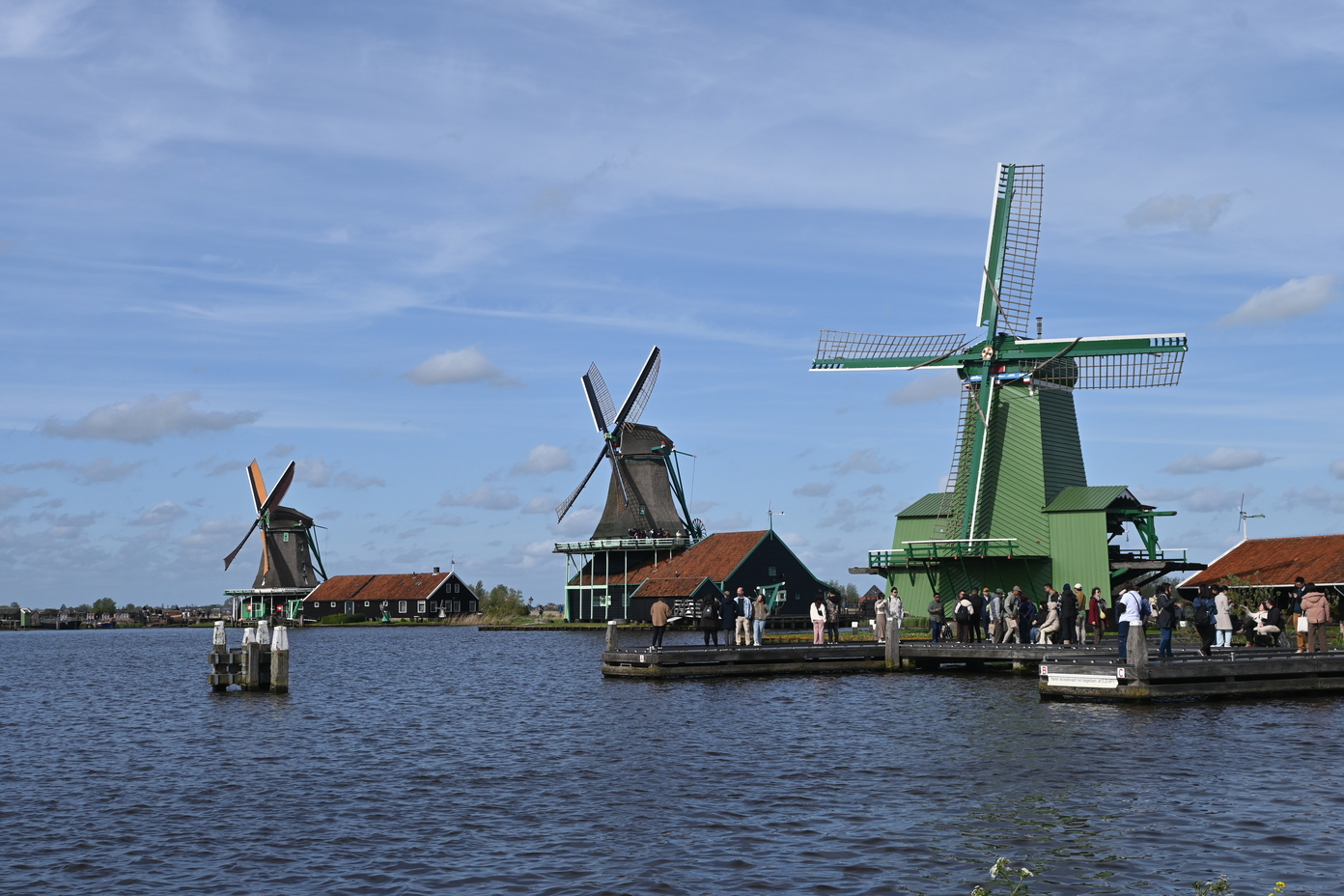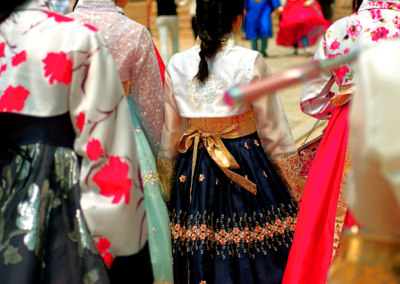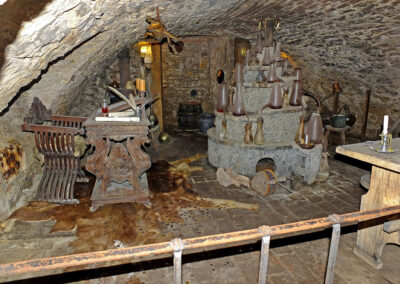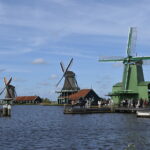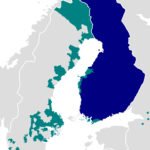Whenever the Netherlands is mentioned, the first image that often springs to mind is that of windmills dotting the riverbanks. However, one may wonder: why did the Dutch erect windmills in such abundance? Were they solely intended for harnessing wind power or did they serve other purposes as well?
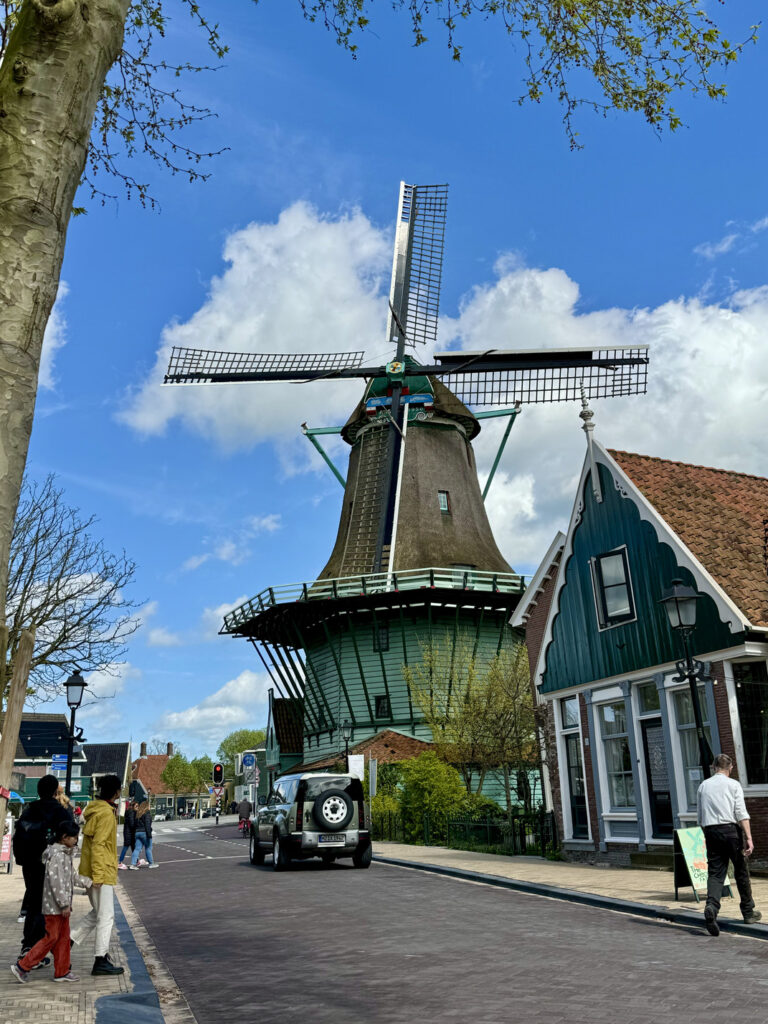
Indeed, Dutch windmills were not originally constructed for the purpose of generating electricity but rather to facilitate the drainage of water from the land. With only 50% of the Netherlands’ terrain rising above a metre above sea level, the land posed significant challenges.
Consequently, from the 16th century onwards, the ingenious Dutch utilised windmills in conjunction with embankments to pump out accumulated water. Capitalising on the flat and windy nature of the region, they gradually reclaimed land from the sea and lakes, creating polders in the process.

A prime example can be found in Zaanse Schans, located near Amsterdam. During its heyday, this area boasted over 1,000 windmills, transforming it into an industrial hub reliant entirely on wind energy. It was not until around 1850 AD that the functionality of windmills gradually waned, being replaced by steam engines as industrial technology advanced.
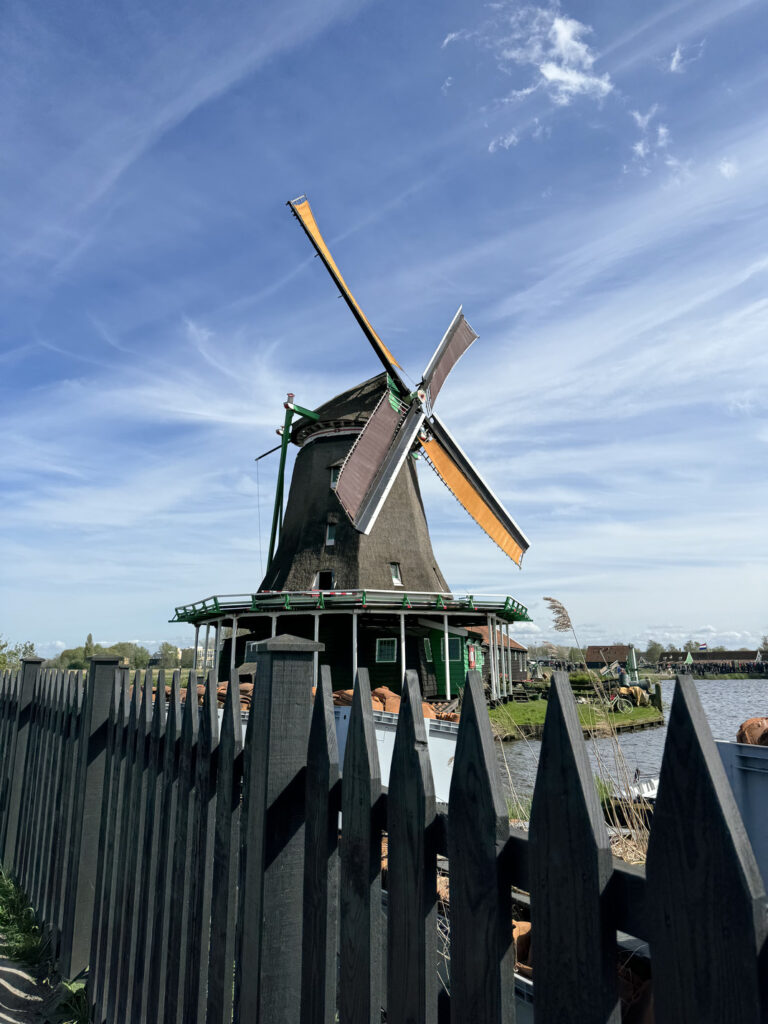
Due to its low-lying geography, the Netherlands perpetually contends with the threat of sea erosion. Fuelled by a tenacious survival instinct, the Dutch embarked on a remarkable endeavour to reclaim land from the sea by constructing dams, embankments and towering water-pumping windmills reaching heights of up to 9 metres. This relentless pursuit of habitable territory dates back to 1229 when the Dutch pioneered the world’s first windmill, harnessing its power to serve human needs.
For generations, grain processing relied on primitive methods, initially through manual labour, then with the aid of horse-drawn treadmills and waterwheels driven by hydropower, and eventually transitioning to windmills fuelled by the country’s flat terrain and abundant winds.
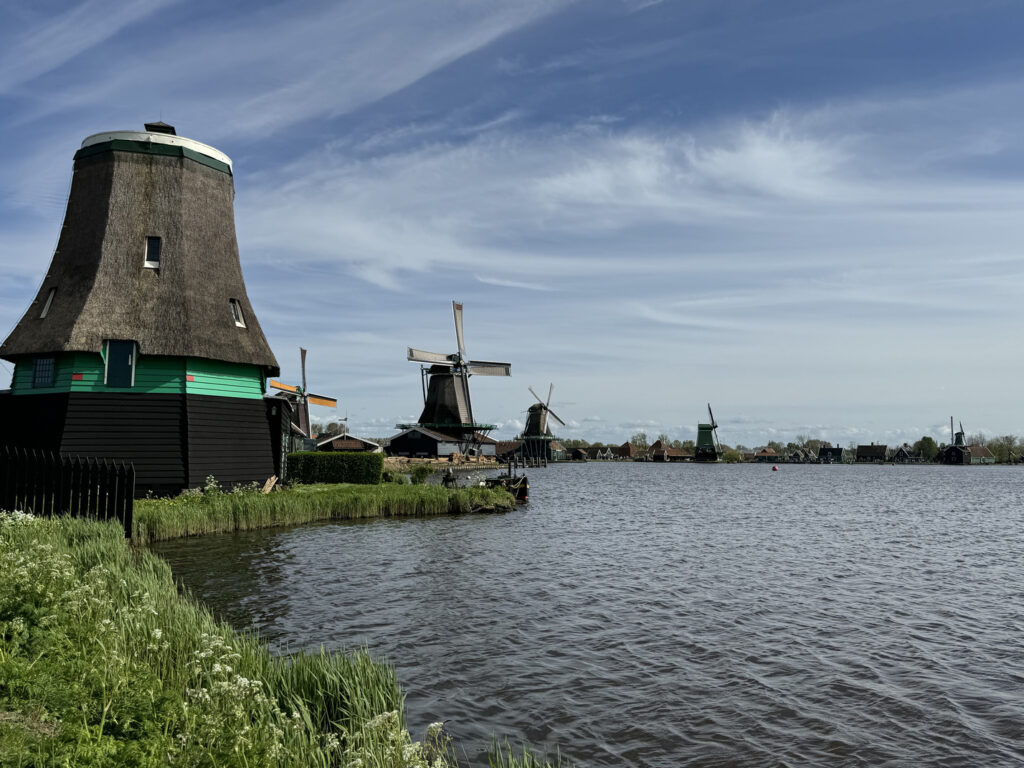
As demand surged, windmill technology evolved rapidly, expanding beyond grain milling to include a myriad of tasks such as processing barley, sawing logs into beams and boards, paper manufacturing, oil extraction from various crops like linseed and rapeseed, and spice grinding, including mustard production.
Despite its transformation into a modern nation, the Netherlands has managed to preserve its ancient traditions, with the iconic windmills symbolising Dutch national culture. They still operate in every corner of the country. In this “Land of Windmills”, which flourished centuries ago, there were once nearly 10,000 windmills. However, the rise of alternative power sources such as steam engines, internal combustion engines and electric motors led to the demise of many of these windmills, leaving only around 1,000 remaining.
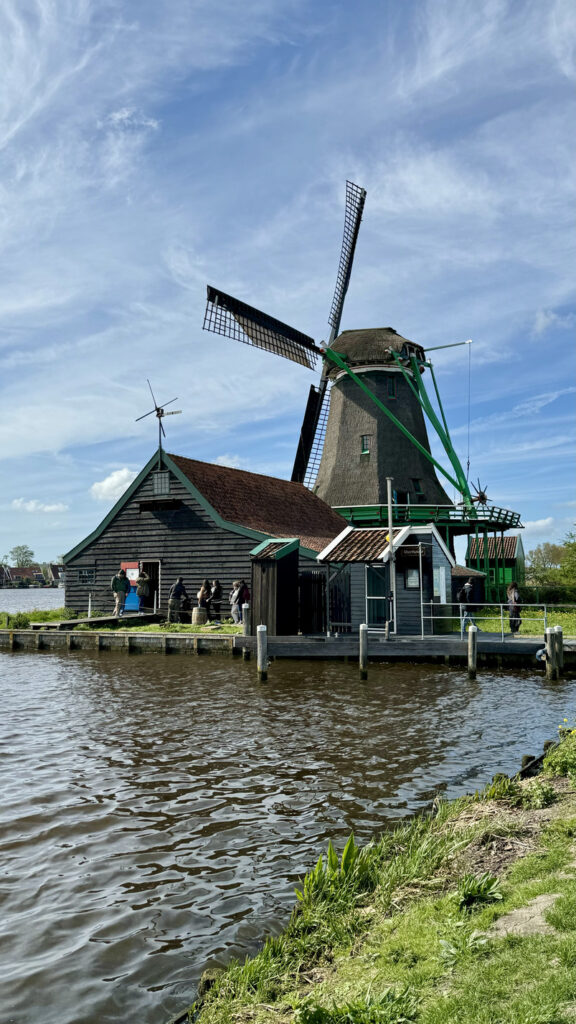
The Dutch hold a deep appreciation for the pivotal role windmills played in the country’s development, hence they designate the second Saturday in May each year as “Windmill Day”. On this occasion, windmills across the nation synchronise their rotations, and the entire country joins in celebration. With windmills now a rare sight, both Dutch locals and tourists alike flock to Windmill Villages or Windmill Museums to marvel at these historic structures.
Merely 20 kilometres away from Amsterdam lies the picturesque Zaanse Schans Windmill Village. Here, the preserved buildings and traditional craftsmanship from the 16th and 17th centuries seamlessly blend with modern production methods. The village’s distinct environment and architecture, characterised by wooden houses and bridges hark back to the early days of industrialisation. Combining daily life with tourism, Zaanse Schans attracts countless visitors annually with its serene natural setting, solemn historic buildings, traditional craft demonstrations and ancient windmills.
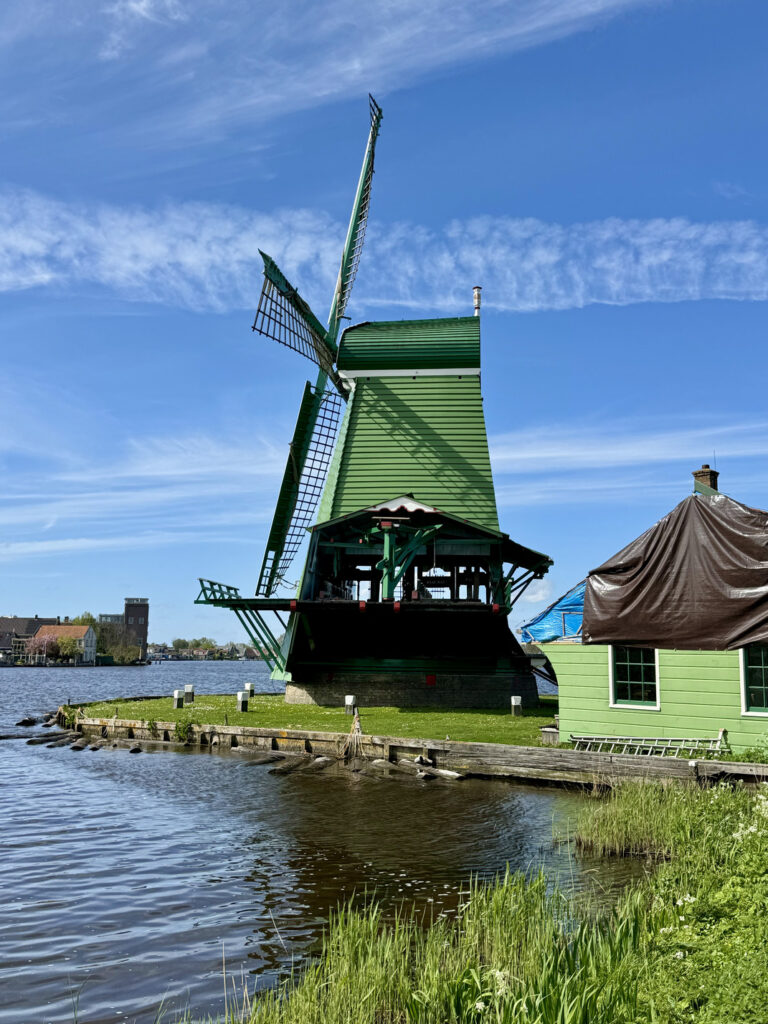
Within the village, visitors can witness on-site workshops crafting traditional Dutch wooden shoes and cheese. While Dutch wooden shoes, known as klompen, are rarely worn in modern times, they still evoke nostalgia for their warmth and moisture-resistant qualities, especially among rural farmers. Demonstrators at the Folk Culture Village adeptly engage curious tourists, even speaking Chinese terms during demonstrations, eliciting laughter and amazement from the audience. Despite the laughter, many tourists eagerly purchase Dutch wooden shoes as souvenirs, contributing to the continued popularity of this traditional craft.
With nearly 10 million tourists visiting the Netherlands annually, the country has become renowned as a tourist destination, ensuring the continuation of ancient traditions such as wooden shoe making. Souvenir shops across the nation proudly display vibrant wooden shoes of various sizes, testament to the enduring allure of Dutch craftsmanship and culture.
